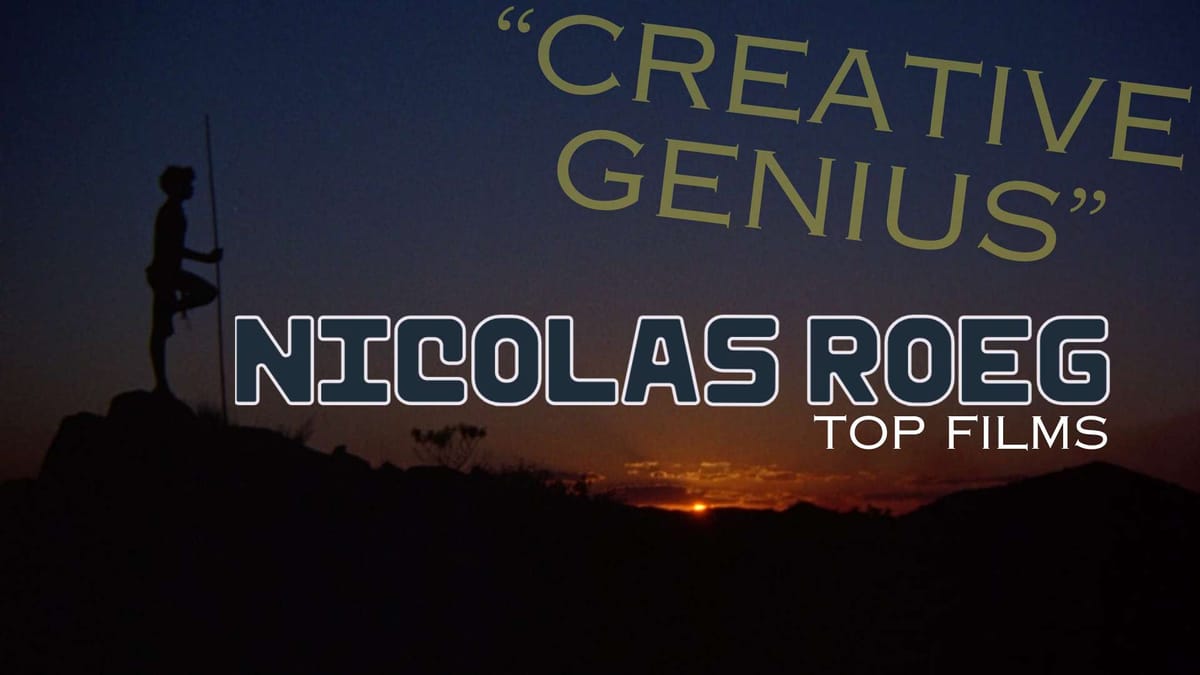Nicolas Roeg's Best Films: A Visionary's Controversial Legacy
Journey through Nicolas Roeg's controversial yet groundbreaking filmography, exploring how his innovative techniques and fearless approach to storytelling transformed cinema, despite constant industry resistance. Discover why his ten greatest films continue to influence filmmakers today.

"I've never storyboarded anything. I like the idea of chance. What makes God laugh, is people who make plans." - Nicolas Roeg
Key Takeaways
- Pioneering non-linear narrative techniques that challenged Hollywood conventions
- Notorious battles with studio executives over artistic vision
- Masterful blend of psychological themes with experimental filmmaking
- Profound influence on modern cinema despite industry resistance
- Created some of cinema's most controversial yet critically acclaimed works
Introduction
When I think about the most daring filmmakers of the 20th century, Nicolas Roeg stands apart as a true maverick. His revolutionary approach to storytelling didn't just push boundaries—it often erased them entirely. Having admired his work for years, I believe his influence on cinema can't be overstated, even though many of his greatest achievements faced significant resistance from the industry.
Quick Facts About Roeg's Filmmaking
- 🎬 Known for: Fractured narrative style
- 🏆 Key Period: 1970-1990
- 🎯 Major Themes: Isolation, identity, time
- 💫 Signature: Complex editing patterns
- 🎭 Genre-Crossing: From horror to children's films
The Ten Essential Roeg Masterpieces
10. Track 29 (1988)

I remember being both puzzled and fascinated by this surreal psychological drama. Gary Oldman's mysterious visitor role and the film's exploration of Freudian themes showcase Roeg's ability to blur reality and imagination.
9. Castaway (1986)

This exploration of isolation perfectly demonstrates what I admire about Roeg's observational style. The psychological effects of solitude are captured with remarkable precision.
8. The Witches (1990)

While this might seem like an outlier in Roeg's filmography, I've always appreciated how he maintained his dark sensibilities within a children's film format. Anjelica Huston's terrifying performance proves Roeg could master any genre.
7. Insignificance (1985)

This unique meditation on fame and identity represents Roeg at his most playful. The imagined meeting between historical figures allows him to explore his favourite themes of identity and perception in fresh ways.
6. Eureka (1983)

When I first saw Gene Hackman's portrayal of a prospector who strikes gold, I was stunned by the film's opening sequence. Though controversial, its cosmic mysticism and symbolism make it essential Roeg.
5. Performance (1970)

This must be one of the most audacious directorial debuts in cinema history. Co-directed with Donald Cammell, the film's blend of gangster drama with psychedelic experimentation set the tone for Roeg's entire career.
4. Bad Timing (1980)

The film that earned Roeg perhaps his most infamous review was "a sick film made by sick people for sick people." I believe this complex exploration of toxic relationships represents Roeg at his most uncompromising.
3. Walkabout (1971)

In my years of studying cinema, few films match the visual poetry of this Australian outback drama. Its exploration of civilisation versus nature through the eyes of lost children remains powerful today.
Fun Facts
- 🎥 Started as a tea boy in the film industry
- 🎬 Worked as cinematographer on Lawrence of Arabia
- 🌟 Directed Mick Jagger and David Bowie
- 🏆 Never won an Oscar despite his influence
- 📽️ Shot films on four continents
2. The Man Who Fell to Earth (1976)

David Bowie's casting as an alien seeking water for his dying planet wasn't just inspired—it was perfect. This is where Roeg's fragmented style found its ideal subject matter.
1. Don't Look Now (1973)

Without question, this represents Roeg's masterpiece. Having watched it countless times, I'm still amazed by how it weaves grief, premonition, and horror through Venice's labyrinthine canals.
Expert Corner: Why Roeg Matters
"In my years studying film, I've never encountered another director who so consistently challenged how stories could be told through cinema. His influence on modern filmmaking can't be overstated—we're still catching up to what he was doing in the 1970s."
Tips for First-Time Viewers
- Don't expect traditional narratives
- Pay attention to visual details
- Be patient with the pacing
- Watch each film twice
- Notice the sound design
The Price of Innovation
Studio Battles
Roeg's relationship with studios was consistently turbulent. Warner Bros executives were so disturbed by Performance that they delayed its release and demanded cuts. Even after the success of Don't Look Now, American studios remained wary. The Man Who Fell to Earth arrived in US cinemas heavily cut, while MGM held Eureka back for years.
Controversial Content
When I analyse what made Roeg so divisive, it wasn't just his experimental techniques. His unflinching approach to sexuality and psychological complexity often shocked audiences and executives alike. The infamous love scene in Don't Look Now remains controversial even today.
Artistic Legacy
Despite constant industry resistance, Roeg never compromised his vision. From 1970 to 1990, each film maintained his radical approach to examining physical and emotional landscapes, isolation, and alienation.
FAQ Section
Q: Why is Nicolas Roeg considered innovative?
A: His revolutionary editing techniques and non-linear storytelling approach redefined cinematic language.
Q: What caused so much controversy around his films?
A: His explicit content, experimental narrative structures, and psychological complexity often challenged commercial cinema conventions.
Q: Which Roeg film should newcomers start with?
A: I'd recommend Don't Look Now as it perfectly balances his experimental style with accessible storytelling.














Comments ()